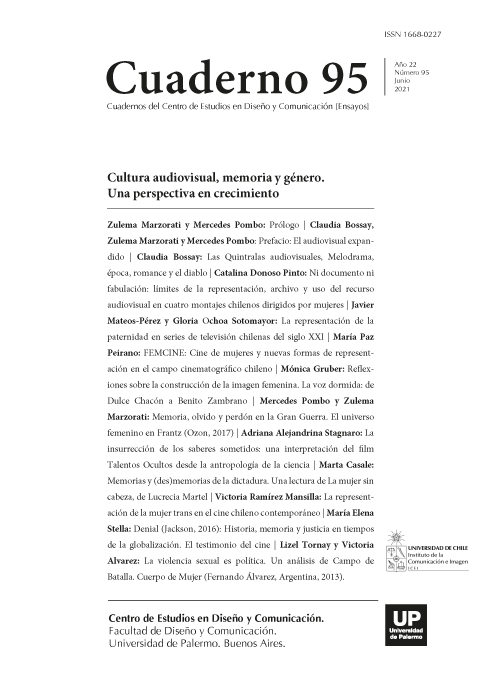Reflexiones sobre la construcción de la imagen femenina. La voz dormida: de Dulce Chacón a Benito Zambrano
Abstract
The Spanish society was undoubtedly broken by the Civil War. A fratricidal war that shook the core of the people from the foundations of their society fabric. Every member of the Spanish society took a side and death, hunger and hate were the results. The aftermath of the war was marked by fire during the long dictatorship that would last until 1975, the year Francisco Franco’s death. As it happens after every war and during every dictatorship, a victorious official story was imposed to set the basis that would keep the Generalísimo in power.
But what happened to the voices of those who were defeated? What about the women that supported the defeated side? Spanish writer Dulce Chacón followed their paths and, after four years of interviews along Iberian Peninsula, her novel The Sleeping Voice, was released in 2002. It tells the story of those women, who were tortured, humiliated and executed in the women’s Prison of Ventas in Madrid. Based on real testimonies, she gave a voice to those who were silenced. In this way, she builds a collective mosaic, formed by convicts and jailers that bares the reclusion miseries of the First Francoism period (Fontana, J., 1986, Tusell, J., 1996).
We propose in this work an approach to the construction of the feminine image in the novel in order to reflect on the depth of the hermeneutical issues in its lines, that articulate the narration and the context in which it was developed. We will also analyze the homonymous transposition of the Spanish director Benito Zambrano version of 2011. We are concerned about the changes produced by the adaptation, not only by the transfer from written work to the screen, but how it was developed. Can the tale of women narrated by a woman be preserved in its core? Does the view of a male director change the femenine perspective that gave the piece life?
References
Cárcel de Ventas / Madrid 1931-1969. En https://carceldeventas.madrid.es/ Recuperado el 18/03/19.
Chacón, D. (2008). La voz dormida. Bs. As.: Alfaguara.
de Lauretis, T. (1992). Alicia ya no. Feminismo, Semiótica, Cine. Madrid: Cátedra.
Foucault, M. (2002). Vigilar y castigar. Nacimiento de la prisión. Trad. A. Garzón del Camino. Bs. As.: Siglo XXI.
Garrido, E. (editora) (1997). Historia de las mujeres en España.Madrid: Síntesis.
Gonzaléz Duro, E. (2012). Las rapadas. El franquismo contra la mujer. Madrid: Siglo XXI.
Gusmán, L. (2005). Epitafios. El derecho de la muerte escrita. Bs. As.: Norma.
Hernández Holgado, F. (2011). La prisión militante. Ventas (Madrid) y Les Corts (Barcelona). Stud. hist., H.ª cont., 29, pp. 195-236. Ediciones Universidad de Salamanca.
Weil, S. (1961). La Ilíada o el poema de la fuerza. En La fuente griega. Bs. As.: Sudamericana.
Wolf, S. (2001). Cine / Literatura. Ritos de pasaje. Bs. As.: Paidós.
Los autores/as que publiquen en esta revista ceden los derechos de autor y de publicación a "Cuadernos del Centro de Estudios de Diseño y Comunicación", Aceptando el registro de su trabajo bajo una licencia de atribución de Creative Commons, que permite a terceros utilizar lo publicado siempre que de el crédito pertinente a los autores y a esta revista.


